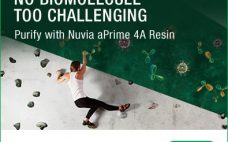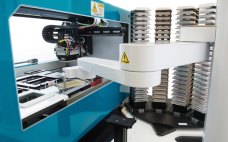This webcast features: Dr. Linda Pullan, Founder, Pullan Consulting China’s biopharmaceutical industry is continuing its growth momentum. This robust growth is boosted by continuous investment into the sector. A clear strategic indicator of the government’s intentions in biopharma and biologics has been the China’s investment in biopharma industrial hubs, which will have added more than USD $300 billion to the biological industry nationwide by 2020. In Part 2 of our series, Dr. Linda Pullan, Principal, Pullan Consulting, covers China investments,…
Author Archives: BPI Contributor
Manufacturing Considerations for Virus Filtration Processes Using Planova BioEX
This webcast features: Parag Patel, Senior Regional Manager, Asahi Kasei Bioprocess Viral clearance of biopharmaceutical- and plasma-derived therapeutics is an important regulatory requirement that ensures patient safety. Although there are many viral clearance strategies and technologies that can be deployed, size exclusion filtration remains the gold standard in virus removal. Virus filtration by size exclusion is a robust method for removing virus without impacting the efficacy of the final drug product. We will take you through the steps of developing…
Developability: Evaluating Specificity, Immunogenicity, Functionality, and Manufacturability for Lead Candidate Selection
This webcast features: Campbell Bunce, Chief Scientific Officer, Abzena Developability assessment is based on multiple readouts that capture the fundamental characteristics of successful drug design: specificity, functionality, safety and manufacturability. Developability assessment can severely reduce the time and expenditure required to take multiple lead candidates through expensive cell line development and manufacturing runs when the molecule has inherent liabilities that will inhibit its progress. Why do it: Identify liabilities and risk factors in drug candidates early in the development process…
A New AEX Mixed-Mode Chromatography Resin for High Selectivity and Recovery
This webcast features: Dr. Xuemei He, R&D Manager, Chromatography Media Chemistry, Bio-Rad Laboratories Biomolecules are becoming more diversified and complex. Bio-Rad’s newest hydrophobic AEX chromatography resin, Nuvia aPrime 4A, is engineered with distinct balance of ligand density and hydrophobicity. In this webinar, Dr. Xuemei He will introduce the properties of Nuvia aPrime 4A Resin. This mixed-mode resin is designed to facilitate selective and reversible binding of target molecules for higher purity and recovery over traditional chromatography resins. Case studies will…
The Proper Use of Extractables Data: Aspects Beyond Extractables Measurement
This webcast features: Dr. Armin Hauk, Lead Scientist, and Jean-Marc Cappia, Head of Segment Marketing Vaccines, at Sartorius Stedim Biotech The implementation and use of single-use system (SUS) in biopharmaceutical production is rapidly increasing and directly correlated with higher demands on Extractables and Leachables (E&L) information. Sartorius as a leader in SUS technology can look back on +20 years of experiences in the E&L area. This knowledge together with our current research initiatives enables us to progress and go beyond…
Automating Workflow Solutions, Not Instruments: Engineering Validated Processes for Biologics Screening
This webcast features: Brian Bordeau, Business Development, Global Advanced Workflows and Engineered Solutions, FortĂ©Bio Automation can be a lifeline for scientists working in the discovery and development of biologics. The prospects for increasing sample throughput, reducing operator time, and streamlining data audit trails are alluring. However, at the same time, introducing automation can be a frightening and confusing project, with efforts often falling short of expectations for lack of bigger picture thinking. The Advanced Workflow Engineering Solutions (AWES) team at…
China Biopharma Opportunities
This webcast features: Michael Frizberg, President, CMAB – Switzerland and Hong Kong and Eric Langer, Principal, BioPlan Associates China aspires to become one of if not the leading country contributor to the global pharmaceutical and biopharmaceutical industry by 2030. Large companies in this sector—both international firms expanding their own footprint within China and indigenous Chinese firms establishing both their internal and their global footprints—have witnessed double-digit growth for much of the past five to seven years. The global pharmaceutical and…
Clearing the Way for Viral Clearance
This webcast features: David Cetlin, CEO, MockV Solutions and John Li, Staff Scientist, Thermo Fisher Scientific To determine the viral clearance efficacy of biomanufacturing steps, mammalian viruses are “spiked” into in-process solutions, processed and analysed for reduction. Due to the infectious nature of these live viruses, “spiking studies” are typically conducted in specialized BSL-2 facilities. The costs and logistics associated limit viral clearance analysis during process development and characterization. To overcome this challenge, a non-infectious Minute Virus of Mice –…
A Strategy to Remove Formulation Development from the Critical Path During Biologics Development
Biopharmaceuticals tend to be highly unstable. Therefore, as the product development program progresses to phase 3 clinical stage, formulation development is required to ensure drug product quality and stability during manufacturing, storage and clinical administration. Also, formulation development is often on the critical path to successful IND and BLA fillings. During this Q&A, Dr. Jun Lu, Director, Analytical Development, discusses how Catalent Biologics utilizes automation, specifically the Uncle platform, during formulation development. Login and click View PDF to view the…
Step-wise strategy to address process characterization and late phase development – toward the definition of a standardized approach
Drivers for process characterization and late phase development include improving process understanding, enhancing process robustness, and assurance that the process delivers consistent product quality within all Proven Acceptable Ranges (PARs). Regulator’s expectations for biologic submissions include the application of statistical methods to improve the confidence of the PARs and knowledge of the design space for a process. Different approaches have been reported for process characterization but contain common elements including risk assessment, scale-down model qualification, and statistical design of experiments.…










